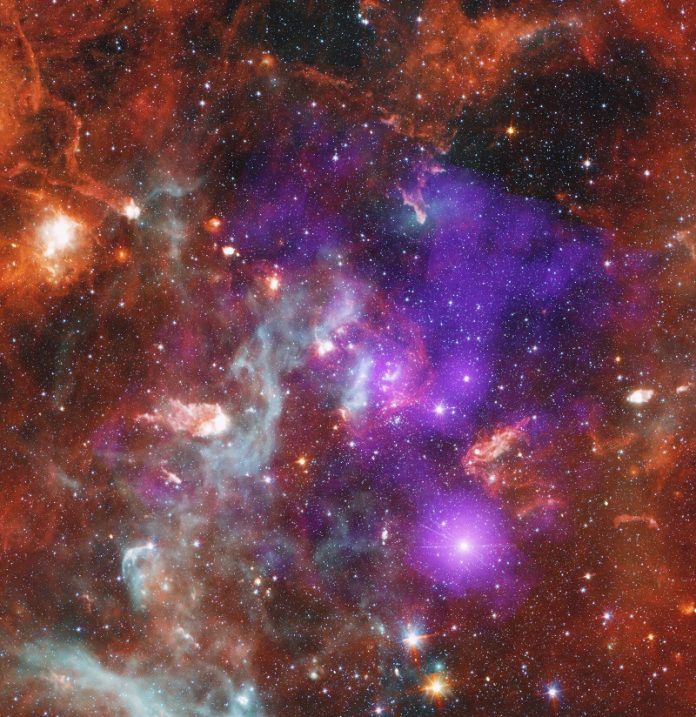
Astronomers have discovered certain “danger zones” in star clusters where forming planets face serious threats.
These findings were made using NASA’s Chandra X-ray Observatory, which combined data from ultraviolet, optical, and infrared sources to understand how intense radiation from massive stars can disrupt new planet formation.
The study focused on the Cygnus OB2 cluster, the closest large group of stars to our sun, located about 4,600 light-years away.
Cygnus OB2 contains hundreds of massive stars and thousands of smaller stars. The team aimed to map out areas within the cluster where new planets may be at higher risk.
Using long observation periods, Chandra collected deep X-ray data from different regions of Cygnus OB2.
These individual images were then stitched together to form a large composite image of the entire cluster.
The Chandra data, shown in purple, revealed glowing X-rays from young stars and the surrounding region.
Infrared data from NASA’s Spitzer Space Telescope, which was used before its retirement, helped identify cooler dust and gas and provided more information on young stars.
Star clusters like Cygnus OB2 are filled with intense X-ray and ultraviolet radiation.
Massive stars in the cluster emit large amounts of this high-energy radiation, which can be harmful to the delicate disks of dust and gas that surround young stars.
These disks are essential because they are the building blocks for forming new planets.
Over time, planet-forming disks naturally fade away, as some material falls onto the star while other parts evaporate due to the star’s radiation.
This process, called “photoevaporation,” typically takes 5 to 10 million years for average-sized stars. However, in clusters with many massive stars, this disk evaporation happens much faster due to the intense radiation.
The research team found that young stars near massive stars lose their planet-forming disks much quicker. They discovered that in less crowded areas with lower radiation, about 40% of young stars still had disks.
But in regions with high-energy radiation and densely packed stars, only about 18% of young stars retained their disks. The most dangerous area for planet formation is within about 1.6 light-years of the most massive stars in the cluster.
In addition, a separate study by the same team explored the diffuse X-ray emission in Cygnus OB2. They found that higher-energy X-rays come from collisions between powerful gas winds blowing away from massive stars, which heat up the gas and produce X-rays. Lower-energy X-rays likely result from gas within the cluster interacting with gas outside the cluster.
These findings, led by Mario Giuseppe Guarcello from the National Institute for Astrophysics in Italy, were published in The Astrophysical Journal Supplement Series in November 2023. Another paper led by Juan Facundo Albacete-Colombo from the University of Rio Negro in Argentina focused on the diffuse emission and was also published in the same journal.
These studies provide valuable insights into the challenging environments where new planets form and highlight how radiation from massive stars can impact the growth of planetary systems.



